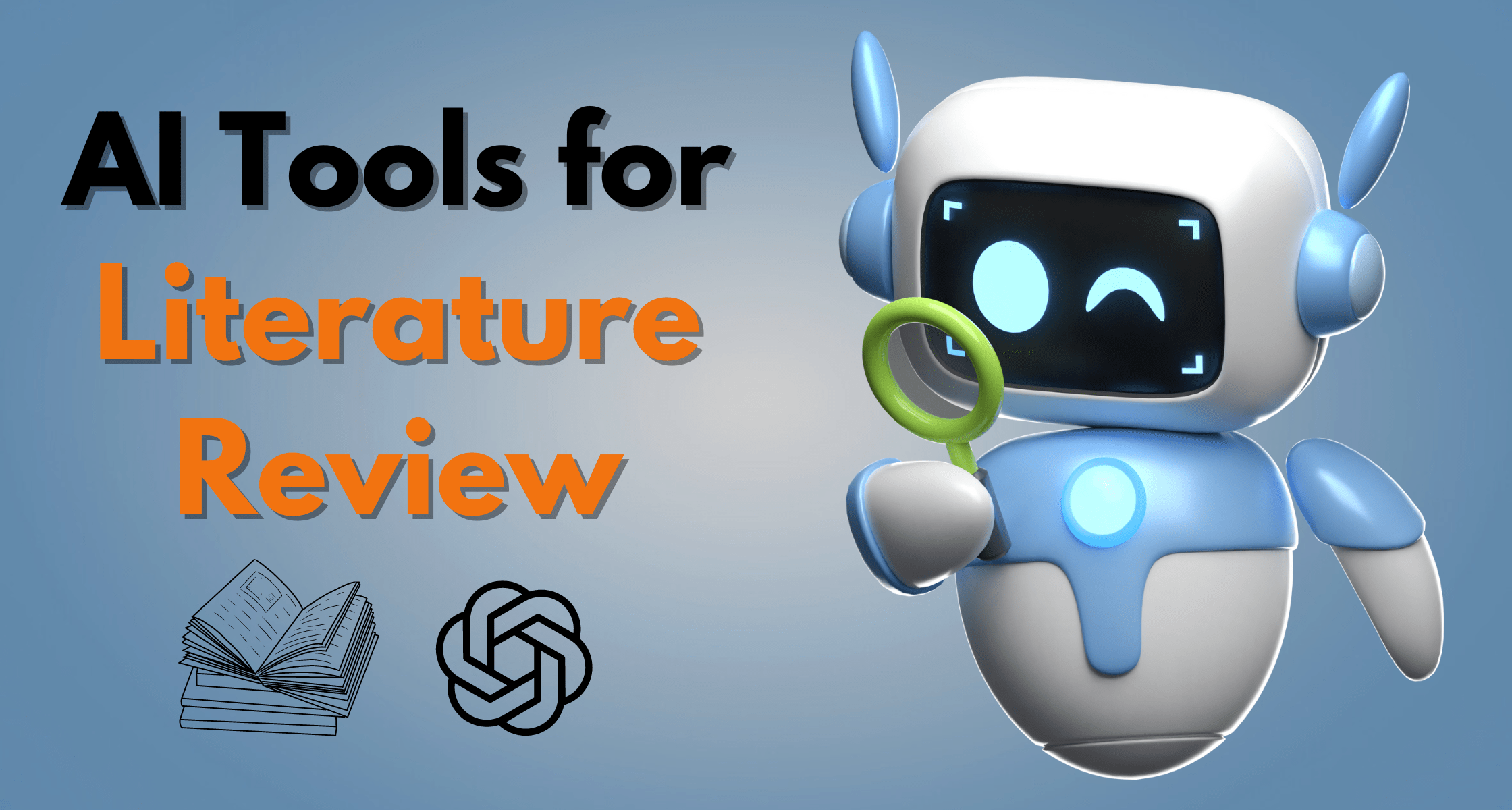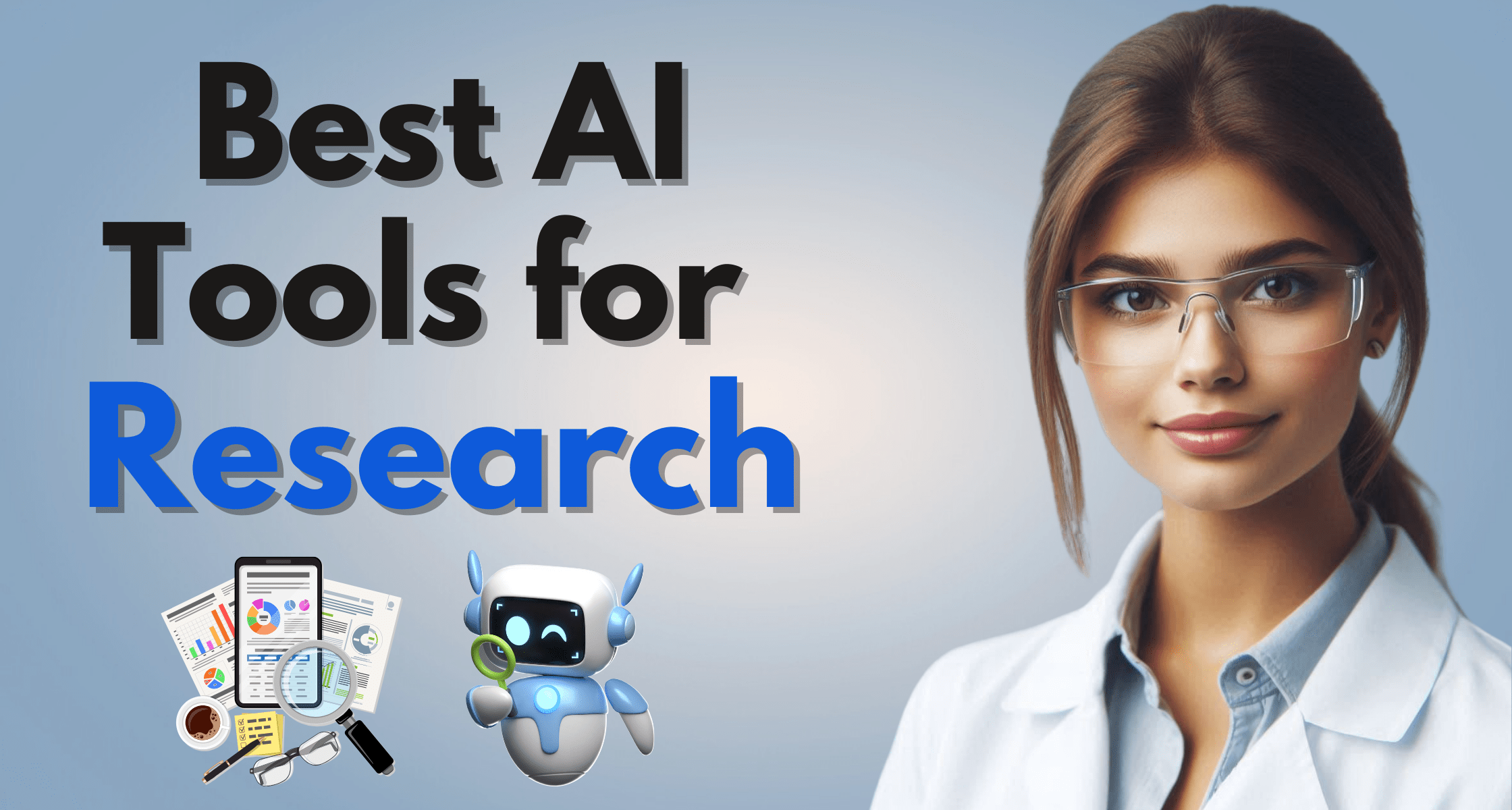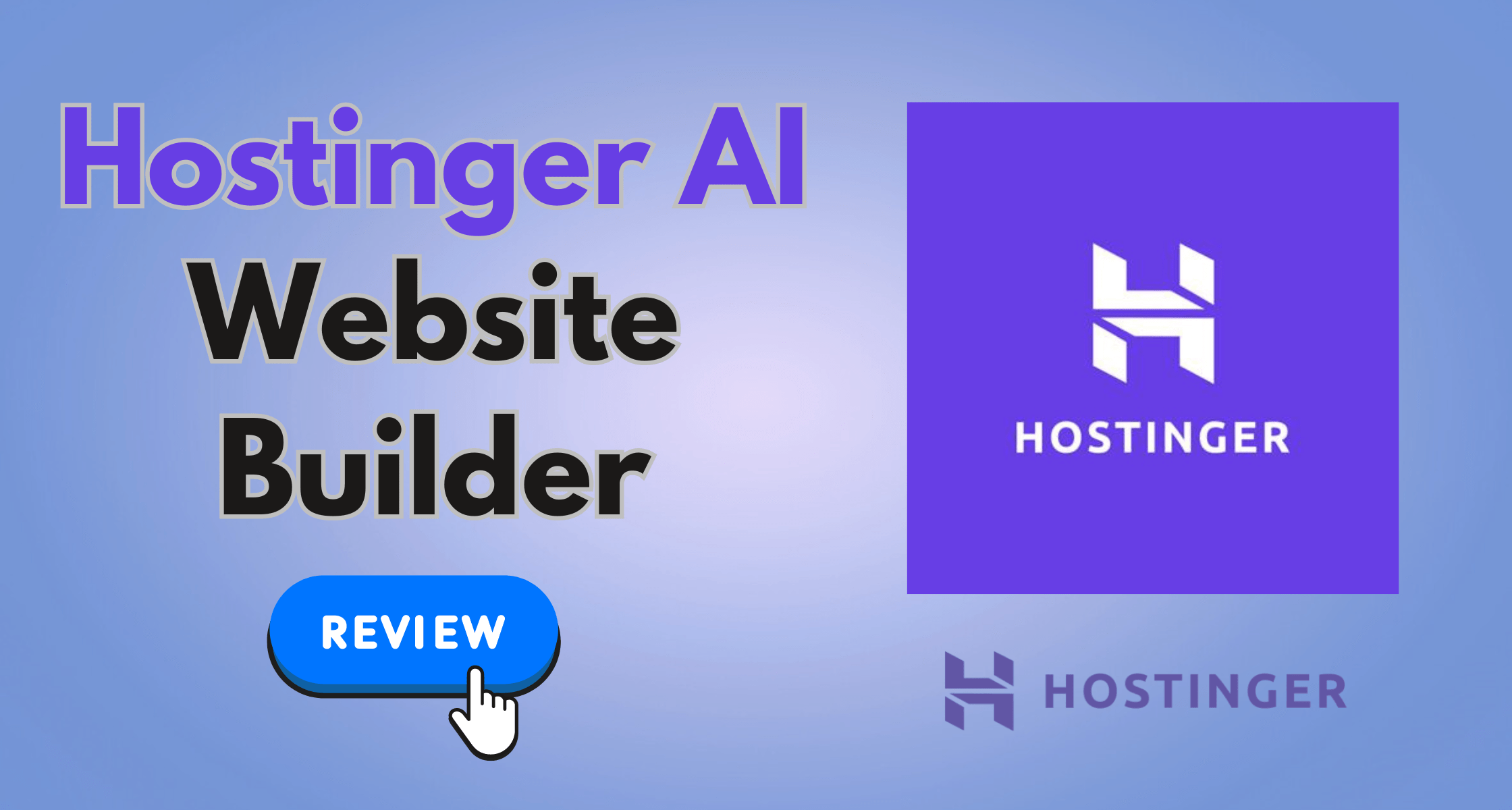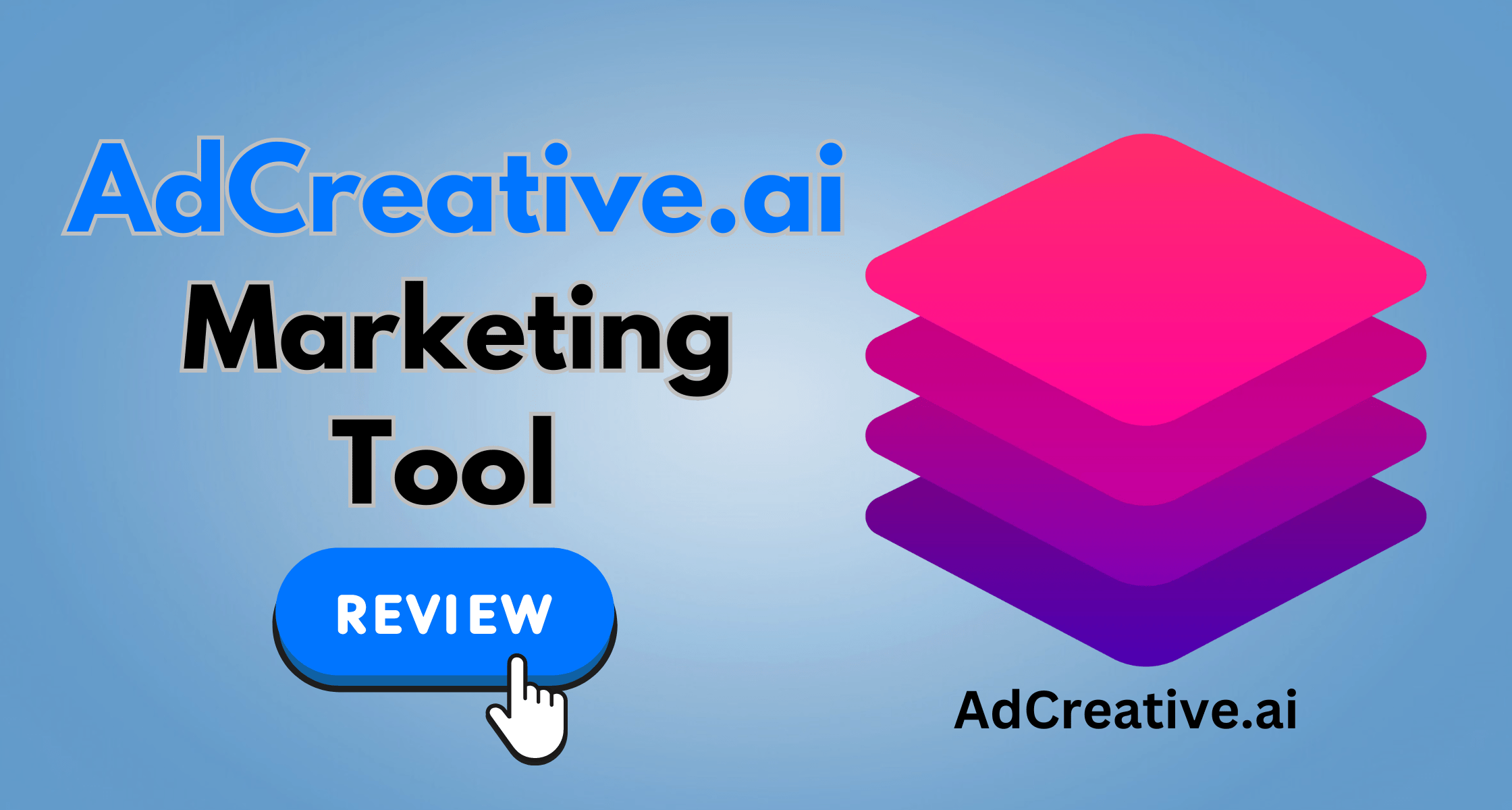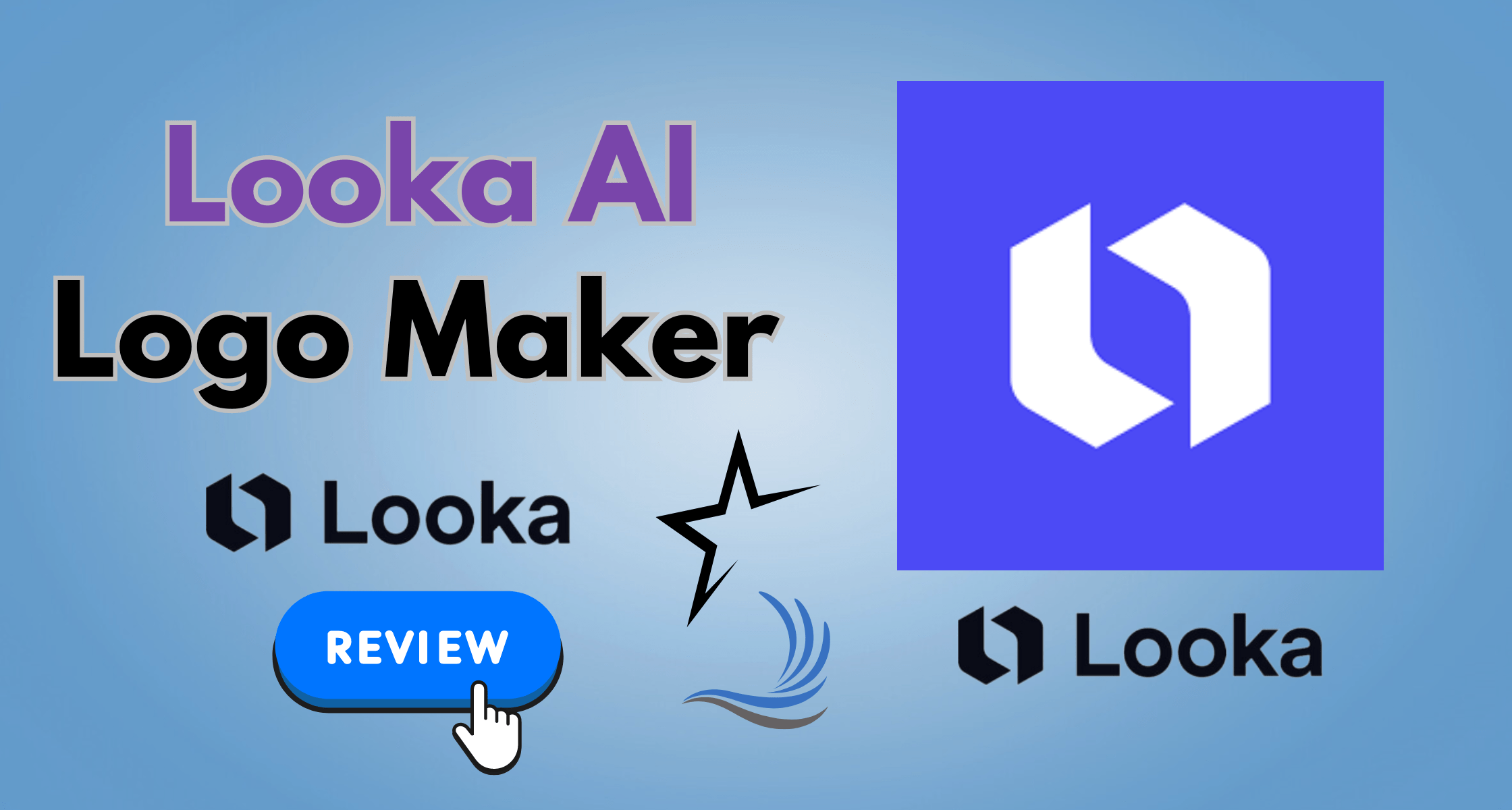Do you want to write a literature review that will wow your professor? The landscape of AI tools for literature review has changed significantly by 2024, providing cutting-edge options that can completely change the way you conduct academic research. These state-of-the-art technologies improve the breadth and caliber of your literature evaluations in addition to streamlining your process.
Advanced data analysis and automatic summarization are only two examples of how AI tools are changing the way scholars do their work. We’ll look at 11 AI tools for literature reviews in this post, which will help you stand out in the classroom and demonstrate your research abilities like never before.
To produce research articles and theses of the highest caliber, academics and students must become proficient in the literature review process.
A comprehensive literature review is a generally difficult and time-consuming task. A plethora of material, including papers from conferences, academic journals, and other scholarly publications, must be sorted through by researchers.
Academics may guarantee a more thorough and correct assessment by utilizing AI technologies. This will free up their time to concentrate on higher-level analysis and synthesis, which will eventually improve the caliber and effectiveness of their study.
In this article, we will explore the top 11 AI tools for literature review that will not only save you countless hours but also make your work more accurate and comprehensive. By the end of this guide, you’ll have a clear understanding of how these AI tools can transform your research process and make your professor think you’re a genius.
Why AI Tools Are Essential for Literature Reviews?

The Traditional Literature Review Process
A literature review often entails a number of time-consuming processes. You must first use search engines and databases to find pertinent content.
After that, you have to go over the findings, read a ton of articles, and assess them critically. Ultimately, you combine the information to create a logical story.
This procedure is laborious and prone to human error, which could result in the omission of important studies or incorrect data interpretation.
How AI is Transforming Literature Reviews
AI is completely changing the way that literature reviews are done. AI technologies can manage massive datasets, automate the search and review process, and offer insights that would be challenging for people to find thanks to their sophisticated algorithms and machine learning skills.
You can save time and effort by using these AI tools, which can swiftly search through thousands of papers, uncover pertinent studies, and even highlight important findings. The advantages are obvious: higher accuracy, faster speed, and easier handling of large volumes of data.
Criteria for Selecting AI Tools for Literature Review
Features to Look For
When selecting an AI tool for your literature review, it’s crucial to consider several key features:
- Natural Language Processing (NLP): This allows the tool to understand and process human language, making it easier to find and analyze relevant papers.
- Machine Learning Capabilities: These enable the tool to learn from data and improve its performance over time.
- Data Mining: This feature helps in extracting useful information from large datasets.
- User-Friendly Interface: A tool that is easy to use will save you time and reduce the learning curve.
Evaluating AI Tools
It’s critical to thoroughly consider, measure, and compare various possibilities when selecting the best AI tools for literature reviews. Here is a thorough how-to guide for evaluating these tools:
- Identify Your Needs
- Determine the specific requirements for your literature review (e.g., search capabilities, citation management, data extraction).
- Understanding your needs helps narrow down options.
- Test User-Friendliness
- Evaluate the user interface and overall experience.
- Look for intuitive features like drag-and-drop, easy navigation, and clear instructions.
- Assess Search and Filtering Capabilities
- Check the tool’s performance in searching and filtering literature.
- Ensure it offers advanced search options, including keyword searches, Boolean operators, and date/publication filters.
- Review Data Extraction and Annotation Features
- Look for advanced data extraction capabilities such as automatic summarization and annotation.
- These features help identify key points in large volumes of text quickly.
- Consider Integration with Other Software
- Ensure the tool integrates seamlessly with other software (e.g., reference managers like Zotero, word processors like Microsoft Word).
- Good integration streamlines workflow and improves efficiency.
- Evaluate Cost
- Compare free tools versus paid ones considering your budget.
- Weigh the additional features in paid tools to justify their cost.
- Check for Customer Support and Community
- Look for tools offering comprehensive customer support (e.g., live chat, email, detailed documentation).
- A strong user community can provide valuable insights and tips.
- Read Reviews and Testimonials
- Look for feedback from other users in academic forums, websites, and social media groups.
- User reviews provide real-world insights into tool performance and reliability.
- Trial Periods and Demos
- Take advantage of trial periods and demos to understand the tool’s capabilities.
- Hands-on experience helps determine if the tool meets your requirements.
- Scalability and Future-Proofing
- Ensure the tool can scale with your research needs.
- Check for regular updates and improvements to keep up with AI advancements.
By systematically evaluating AI tools based on these factors, you can choose the most suitable one for your literature review needs, enhancing your research process effectively.
What Are The Top AI Tools for Literature Review?
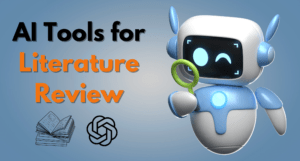
Here are my top picks for the best AI tools for literature review to use this year:
1. Scite
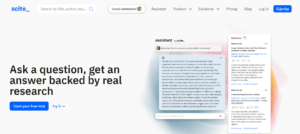
Scite is an innovative AI-powered tool designed to revolutionize the way academics conduct literature reviews.
It simplifies and enhances the process of reading, assessing, and summarizing research articles by utilizing state-of-the-art AI technology to bring a new level of comprehension to scientific information.
Key Features
- Smart Citations: This feature allows users to see how a publication has been cited, providing context and classification that describes whether it supports or contrasts the cited claim.
- Advanced Search: Filters and sorts through metadata of publications, helping users find high-quality, relevant research.
- Custom Dashboards: Users can build collections of articles and get aggregate insights and notifications.
- Reference Check: Ensures proper citation of high-quality references in manuscripts.
- Large Language Model (LLM) Assistant: Offers research-backed answers and minimizes the risk of misinformation.
Pros
- ✅ Enhances the quality of literature reviews by presenting immediate insights into how papers are discussed in the academic community.
- ✅ Saves time by streamlining the research process with its Smart Citations and advanced search capabilities.
- ✅ Assists in identifying research gaps and critically engaging with publications.
Cons
- ❌ May require a learning curve for users unfamiliar with AI tools.
- ❌ The depth of analysis is dependent on the quality and quantity of citations available.
Pricing Plans
Scite offers a free trial for new users, encouraging them to experience the tool’s capabilities firsthand. For detailed pricing plans, visit the Scite website or contact their sales team for the most current offerings.
Final Thoughts
Scite stands out as a powerful ally for researchers, offering a suite of tools that not only enhance the literature review process but also contribute to the credibility and quality of scientific discourse.
Its AI-driven method of citation context analysis is very impressive, offering insightful information that is difficult to gather using conventional techniques.
To sum up, Scite is an amazing tool that provides a new angle on critical analysis and literature reviews. It enables researchers to carry out exhaustive assessments more accurately and readily, guaranteeing that their work is supported by esteemed, high-caliber research.
2. Consensus
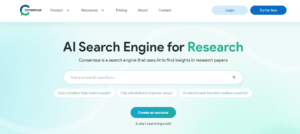
A cutting-edge AI search engine designed specifically for researchers is called Consensus. Its rapid access to more than 200 million scientific publications is intended to make doing literature reviews easier.
Researchers, students, and professionals that need to find evidence-based solutions fast and effectively will find great benefits from this application.
Key Features
- Extensive Coverage: Searches through a vast database of scientific papers without the need for precise keyword matching.
- Instant Analysis: Utilizes GPT-4 and other large language models to summarize results, offering insights at a glance.
- Trustworthy Results: All results are tied to actual studies, ensuring reliability and credibility.
- No Ads: A user-focused experience that prioritizes content over commercial interests.
Pros
- ✅ Evidence-Based: Direct access to peer-reviewed studies ensures high-quality information.
- ✅ AI-Powered Summaries: Saves time by providing quick summaries of extensive research papers.
- ✅ User-Friendly: Designed for a wide range of users, from students to professionals.
Cons
- ❌ Plus Account Requirement: Access to some features may require a ChatGPT Plus account.
- ❌ Learning Curve: New users may need time to familiarize themselves with the tool’s capabilities.
Pricing Plans
Consensus offers a free version for users to start searching and experiencing the tool’s capabilities. For more advanced features and comprehensive access, users are encouraged to explore the various subscription plans available on the Consensus website.
For anyone conducting study, Consensus is a very significant resource. Its user-centric design and AI-driven methodology make it an effective tool for quickly and accurately conducting literature reviews. Finding and summarizing pertinent studies quickly is a big benefit in the fast-paced field of research.
Final Thoughts
Consensus‘ AI-powered search engine transforms literature reviews by giving users instant access to a vast library of scientific publications. Its primary characteristics—wide coverage, quick analysis, and reliable results—make it a vital tool for scholars.
Using Consensus has several benefits, even though some capabilities require a Plus subscription and there may be a learning curve for novice users. It’s an easy-to-use platform that greatly improves research quality and efficiency.
3. Elicit
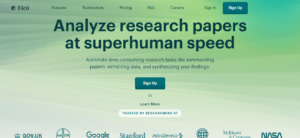
The process of reviewing literature is greatly accelerated by Elicit, a novel AI research helper. Because of its ability to automate laborious processes like data extraction, paper summarization, and finding synthesis, it is a vital tool for academics working in a variety of fields.
Key Features
- Discovery Search: Utilizes a database of 125 million papers for natural language queries, providing one-sentence abstract summaries.
- Synthesis: Identifies themes and concepts across multiple papers, synthesizing information into organized tables.
- Data Extraction: Automates the extraction of details from papers, including data from tables, saving researchers significant time.
- Customizability: Offers predefined fields or the option to define your own for targeted searches.
Pros
- ✅ Efficiency: Saves researchers up to 5 hours per week by automating data extraction and summarization tasks.
- ✅ Accuracy: Elicit correctly identified over 96% of relevant papers in a screening of 5,000 papers.
- ✅ Cost-Effective: Reduces costs by 50%-80% compared to hiring human research assistants.
Cons
- ❌ Credit System: Some features are locked behind a credit system, which may limit extensive use without purchasing additional credits.
- ❌ Domain Limitation: Works best for empirical domains and may not be as effective for theoretical research.
Pricing Plans
Elicit offers a free Basic plan with a one-time allocation of 5,000 credits. The Plus plan is available at $10 per month, billed annually, providing 12,000 credits per month and additional features like high accuracy mode and priority customer support.
With a feature set that addresses the requirements of contemporary academics, Elicit stands out as a transformational tool for literature reviews. Its remarkable capacity to combine large volumes of data into clear and succinct summaries makes it an invaluable tool for researchers of all stripes.
Final Thoughts
Elicit is an AI-powered research assistant that makes the process of conducting a literature review easier by giving users rapid access to pertinent publications and summarizing important data. It is more appropriate for empirical study and works on a credit system, but it provides efficiency, precision, and cost-effectiveness.
Overall, Elicit is a robust tool that enhances research quality and supports researchers in their quest for knowledge.
4. Iris AI
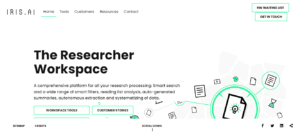
One of the best AI tools is Iris.ai, which provides researchers with a full platform to make the process of reviewing literature more productive and efficient.
It is an invaluable tool for researchers sifting through voluminous scientific material because it is made to handle every facet of research processing, from intelligent searches to data organization.
Key Features
- Content-Based Search: Bypasses traditional keyword searches, enabling interdisciplinary exploration with a content-based recommendation engine.
- Context Filtering: Allows users to filter documents based on criteria explained in a sentence, rather than a single keyword.
- Data Systematization: Automatically extracts and organizes key data points from text and tables into a user-designed table layout.
- Summarization: Provides machine-generated summaries of single or multiple documents to give a quick overview or kickstart writing.
Pros
- ✅ Time Savings: Iris.ai claims to save researchers up to 75% of their time, allowing them to focus on value creation.
- ✅ Accuracy: The tool boasts above-human accuracy in understanding scientific text, which is a significant advantage for researchers.
Cons
- ❌ Specialization Required: Full specialization of the Workspace on a specific field of research may be needed, which could be a limitation for some users.
- ❌ Adaptability: While the tools are adaptable, they may require some effort to align with individual research processes.
Pricing Plans
Iris.ai provides a workspace with a range of smart AI/NLP tools. For detailed pricing plans, interested individuals should request a demo or contact the Iris.ai team directly, as the pricing information is not publicly listed.
For scholars who want to streamline their literature review procedure, Iris.ai presents itself as a reliable and clever choice. It claims to drastically cut down on the amount of time needed to process research data while also improving the accuracy of the findings thanks to its AI-driven capabilities.
Final Thoughts
With its sophisticated search functions, context filtering, data systematization, and summarizing capabilities, Iris.ai is an AI-powered application that revolutionizes the literature review process. Its purpose is to increase the correctness of researchers’ work while saving them time.
There could be significant advantages to incorporating Iris.ai into the research process, even though it might take some work to fully customize to specific study requirements.
5. ChatPDF

An AI-powered platform called ChatPDF was created to make the process of reviewing literature easier for scholars, researchers, and students.
It attempts to make extracting information from long documents as simple as asking a question by enabling users to upload PDFs and communicate with them through a chat interface.
Key Features
- Interactive Q&A: Users can ask specific questions and receive answers directly from the uploaded PDF.
- Summarization: ChatPDF.com provides summaries of the content, helping users grasp the main points quickly.
- Suggested Questions: The tool suggests questions based on the PDF content, guiding users to relevant information.
Pros
- ✅ User-Friendly: The interface is simple and intuitive, making it accessible for all users.
- ✅ Efficient: Quickly extracts answers and summaries, saving valuable time.
Cons
- ❌ Limited to Specific Queries: Struggles with “aggregate” questions that require synthesis across the entire document.
- ❌ No Text Generation: It does not rewrite or edit documents; it’s strictly for Q&A based on the uploaded PDF.
Pricing Plans
ChatPDF offers a free plan for PDFs up to 120 pages, which covers many use cases. For extended use, there is a subscription plan available at $5 per month.
A useful and easy-to-use tool for anyone trying to expedite their literature review procedure is ChatPDF. It can’t take the place of in-depth reading, but it’s a great tool for quickly getting summaries and specialized information.
Final Thoughts
ChatPDF is an AI tool that summarizes PDF papers and offers an interactive Q&A feature to improve the literature review process. It is intended to be easy to use and effective, however it works better for targeted inquiries rather than general ones.
The tool is free for documents up to 120 pages, with a modest subscription fee for more extensive use. Overall, ChatPDF is a valuable resource for anyone looking to save time and effort in their research endeavors.
6. Zotero
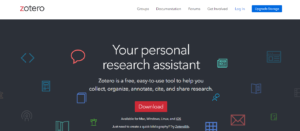
One well-known research tool that helps academics, researchers, and students organize bibliographic information and associated materials is called Zotero.
It has lately included AI capabilities to improve literature review procedures, even though it hasn’t traditionally been an AI tool. This makes it a more dynamic and adaptable aid for academic endeavors.
Key Features
- AI Integration: Zotero has incorporated AI features through KNIMEZoBot, which uses OpenAI models to automate literature review tasks.
- Bibliographic Management: It excels in organizing and sharing references and research materials.
- Collaboration: Zotero allows users to collaborate in groups, sharing sources and notes seamlessly.
Pros
- ✅ Enhanced Productivity: The AI integration with KNIMEZoBot significantly speeds up literature reviews.
- ✅ User-Friendly: It offers a straightforward interface that is accessible even for those without coding experience.
Cons
- ❌ Learning Curve: New users may need time to learn how to effectively use the AI features.
- ❌ Dependence on External Platforms: The AI capabilities rely on integration with KNIME and OpenAI, which may introduce complexity.
Pricing Plans
While Zotero is free to use, using KNIMEZoBot’s AI features could require access to OpenAI models, which could incur extra fees. For the most up-to-date information, users should visit the official Zotero website to get the most recent pricing.
An important advancement in the automation of literature reviews has been made with Zotero’s integration with AI tools such as KNIMEZoBot.
It provides a complete solution for researchers by fusing the cutting-edge capabilities of AI with the reliability of Zotero’s bibliographic management.
Final Thoughts
With the addition of AI functionality via KNIMEZoBot, Zotero now delivers a potent blend of automated literature review and bibliographic management features. Although there is a learning curve, the research community will find it to be a useful tool due to the benefits of enhanced productivity and user-friendly design.
7. SciSpace
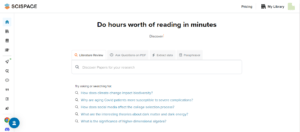
SciSpace is an AI-powered tool that is transforming the way researchers review literature. It is essential for locating and comprehending scientific material because of its user-friendly interface and capacity to search through over 200 million academic publications.
Key Features
- AI Chat for PDFs: Engage directly with your PDFs by asking questions and receiving answers from the text.
- Literature Review Workspace: An interactive platform to find articles, gather insights, and compare sources in one place.
- Customizable Search: Tailor your search with filters like publication type, year, and PDF availability to pinpoint the most relevant papers.
Pros
- ✅ Efficiency: Quickly sifts through thousands of papers, identifying key themes and trends.
- ✅ Interactivity: Enhanced by Copilot, it allows for follow-up questions and deeper understanding.
Cons
- ❌ Complexity: May be overwhelming for new users due to the breadth of features and options.
- ❌ Dependence on AI: Relies heavily on AI, which may not always capture the nuances of complex research.
Pricing Plans
SciSpace offers various pricing plans to suit different user needs. For the most current and detailed pricing information, users should refer to the official SciSpace website.
It is unique in that it is an effective and thorough method for performing literature reviews. Its many features and AI integration make it an invaluable tool for scholars trying to expedite their review process.
Final Thoughts
Researchers may perform comprehensive reviews more easily and accurately with SciSpace, an AI tool that provides a smooth literature review experience. Key elements of the tool that address the many needs of the research community include customizable search choices, a literature review workspace, and AI chat for PDFs.
The advantages of utilizing SciSpace for literature reviews are evident, despite the fact that there can be a learning curve and that its functionality depends on AI. It’s an easy-to-use platform that greatly improves research quality and efficiency.
8. Trinka AI

For academic and technical writing, Trinka is an AI-powered writing and grammar checker. It seeks to improve the literature review procedure by guaranteeing that writing is impactful, clear, succinct, and grammatically accurate.
Key Features:
- Grammar Checker: Trinka’s grammar checker addresses a wide range of issues, from basic to advanced grammar, style, and usage.
- Paraphraser: The paraphrasing tool enhances clarity by providing coherent alternatives while maintaining the original meaning.
- Plagiarism Checker: Access to a leading plagiarism checker ensures the originality of the content.
- Consistency Check: It checks for consistency in writing, crucial for maintaining a professional tone throughout the document.
Pros
- ✅ Comprehensive: Trinka offers a wide range of checks that go beyond typical grammar checkers.
- ✅ Academic Focus: Tailored for academic writing, it understands the nuances of scientific tone and style.
Cons
- ❌ Learning Curve: Users may need to familiarize themselves with the tool to use it effectively.
- ❌ Overdependence: There’s a risk of becoming too reliant on the tool, potentially overlooking the importance of manual proofreading.
Pricing Plans
Trinka has not made its exact price plans available to the public. Those who are interested should visit Trinka’s official website or get in touch with them directly for the most up-to-date and accurate price.
Trinka is a unique resource for researchers and academics who want to improve the quality of their writing. Its emphasis on technical and academic writing makes it an invaluable tool for the literature review process, guaranteeing the best possible end product.
Final Thoughts
Trinka is an AI tool that offers a thorough grammar and style check specifically designed for academic writing, supporting the literature review process. It is a powerful tool for researchers because of its main capabilities, which include a grammar checker, paraphraser, plagiarism detector, and consistency checker.
It is an effective instrument for raising the caliber of academic papers, even though it could have a learning curve and shouldn’t take the position of human proofreading.
9. Julius AI
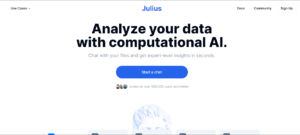
The flexible AI tool Julius AI appears, revolutionizing research operations by combining data analysis and literature review into one platform.
It is designed specifically for researchers who want to engage with scientific literature and data analysis in an effective manner. It promises to revolutionize the research experience.
Key Features
Transitioning seamlessly between literature review and data analysis, Julius AI offers an array of essential features:
- Article Summarization: Engage with scientific literature through a chat interface for quick summaries.
- Literature Review Generation: Instantly create comprehensive literature reviews, minimizing time and effort.
- Statistical Analysis: Perform complex statistical tests like T-tests and ANOVA without coding.
- Qualitative Coding: Translate textual content into actionable insights.
- Charts & Graphs: Visualize data with sleek and informative graphs.
Pros
- ✅ Time-Saving: Automates tedious tasks, transforming hours of work into minutes.
- ✅ User-Friendly: Simplifies complex processes with an intuitive chat interface.
Cons
- ❌ Learning Curve: Mastery of all features may require initial investment in learning.
- ❌ AI Dependence: Heavy reliance on AI might overlook nuanced analysis in certain scenarios.
Pricing Plans
Julius AI offers a convenient free trial, with subsequent pricing plans available upon request. Additionally, they extend a generous 50% discount to students and members of academia.
Final Thoughts
With Julius AI, researchers have a powerful ally that greatly improves the effectiveness of literature reviews and data analysis. Its ability to provide thorough reviews, summarize publications, and carry out complex statistical analysis highlights how vital it is to the research community.
10. Research Rabbit

With its AI-powered capabilities, Research Rabbit transforms literature search and review while meeting researcher needs. It makes the difficult work of literature investigation easier by making it easier to find pertinent articles, visualizing research linkages, and offering tailored recommendations.
Key Features
Transitioning into the digital era of research, Research Rabbit offers:
- Visual Literature Mapping: Creating visual maps to showcase key papers and their connections.
- Personalized Recommendations: Tailored suggestions based on user preferences, continually improving over time.
- Collaborative Collections: Foster collaboration by allowing users to share insights and work on collections together.
- Integration with Zotero: Seamlessly integrates with Zotero for efficient bibliographic data management.
Pros
- ✅ Time-Saving: Streamlines literature review processes through visual maps and intelligent recommendations.
- ✅ Intuitive Interface: User-friendly design, suitable for both novice and experienced users.
Cons
- ❌ Overwhelming Information: Extensive visual data might overwhelm some users.
- ❌ Dependent on User Input: The quality of recommendations relies on the initial papers added by users.
Pricing Plans
Research Rabbit offers free access to researchers, making it an inclusive tool for enhancing literature review processes.
Final Thoughts
Research Rabbit emerges as an invaluable asset for researchers, facilitating efficient literature exploration without the traditional challenges. Its visual mapping and personalized recommendations redefine the research landscape, offering a seamless journey through the world of academia.
11. Scholarcy
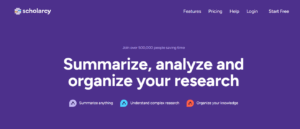
A disruptive force in higher education, Scholarcy provides an AI-driven method for expediting literature reviews. Designed with students, researchers, and academics in mind, its range of features makes it easier to comprehend and analyze complex academic texts.
Key Features
Transitioning into the digital age of research, Scholarcy boasts:
- Summarization: Transforms lengthy texts into interactive summary flashcards, pinpointing essential information.
- Analysis: Critically evaluates texts, guiding users to pivotal sections for interpretation.
- Organization: Facilitates research organization with a library feature for saving and refreshing summaries.
- Synthesis: Generates a literature matrix, enabling side-by-side comparison of papers.
Pros
- ✅ Time Efficiency: Drastically reduces reading time, facilitating quicker comprehension.
- ✅ User-Friendly: Provides a structured, consistent format for navigating and exploring texts.
Cons
- ❌ Information Overload: The volume of data presented may overwhelm some users.
- ❌ Initial Learning: Users might require time to acquaint themselves with the tool’s full capabilities.
Pricing Plans
Scholarcy provides a free trial so that you can experiment with its features. Users are urged to visit the Scholarcy website or get in touch with their sales team for the most recent offerings for comprehensive price plans1.
Final Thoughts
When it comes to literature review tools, Scholarcy is a shining example of innovation, giving users the ability to effectively synthesize and analyze academic papers. It is positioned as an essential tool for researchers at all academic levels due to its user-friendly interface and time-saving capabilities.
Tips for Maximizing the Benefits of AI Tools for Literature Review

Best Practices
It’s essential to adhere to a few best practices in order to get the most out of AI technologies for literature reviews. By following these rules, you may make the most of these cutting-edge tools and guarantee that your study is effective, thorough, and current.
Regularly Update Your Database:
To read the most recent research, you must keep your AI tool linked to the most recent research databases. You may link straight to well-known databases like PubMed, IEEE Xplore, and Google Scholar using a lot of AI technologies.
Updating your database on a regular basis guarantees that you always have access to the most recent research, which is essential to keeping your literature review accurate and relevant.
- Set Up Automatic Updates: Configure your AI tool to automatically sync with research databases at regular intervals. This automation minimizes the risk of missing out on new publications and keeps your literature repository current.
- Periodic Manual Checks: Even with automatic updates, periodically perform manual checks to verify that the tool is fetching the latest research accurately. This practice helps identify and rectify any synchronization issues.
- Database Subscription Management: Ensure that your subscriptions to various databases are active and that your access credentials are up-to-date to avoid interruptions in data retrieval.
Use Advanced Search Features:
One effective component of AI systems for literature reviews is their advanced search functionality.
Making good use of these tools will help you focus on the studies that are most pertinent to your research and dramatically reduce the number of results you get.
- Boolean Operators: Use Boolean operators (AND, OR, NOT) to combine search terms and refine your queries. For example, “AI AND literature review” will return articles that include both terms, making your search more specific.
- Filters and Tags: Apply filters such as publication date, study type, and subject area to narrow down search results. Tagging important studies with keywords can also help in categorizing and retrieving relevant papers quickly.
- Proximity Searches: Some AI tools allow for proximity searches, where you can find documents with keywords appearing within a certain number of words from each other. This can help in identifying studies where terms are contextually related.
Collaborate with Colleagues:
Colleague collaboration can be improved and new ideas can arise when libraries and notes are shared. AI systems with collaboration features make the process of reviewing literature more dynamic and thorough.
- Shared Libraries: Create shared libraries within your AI tool where you and your colleagues can store and access important studies. This centralized repository ensures that everyone is on the same page and can contribute to the literature review process.
- Annotations and Comments: Utilize annotation features to add notes and comments to specific parts of a study. This practice encourages discussion and feedback, fostering a collaborative environment.
- Version Control: Ensure that your AI tool supports version control, so any changes or additions to shared documents are tracked. This feature prevents data loss and maintains the integrity of the research review process.
By adhering to these best practices, you can optimize the productivity and efficiency of AI technologies in your literature review procedure.
You may keep ahead in your research endeavors by working with others, updating your database regularly, and utilizing advanced search options.
The Future of AI in Academic Research

Emerging Trends
Academic research has witnessed substantial advances due to the rapid advancement of AI technology. Important new trends consist of:
- Sophisticated Natural Language Processing (NLP) Algorithms:
- Enhanced Understanding: Future AI tools will feature NLP algorithms capable of understanding context and semantics better, enabling more accurate analysis and summarization of research papers.
- Language Translation: Improved NLP will facilitate high-quality translation of academic papers, breaking down language barriers and promoting global collaboration.
- Improved Data Mining Capabilities:
- Automated Data Extraction: AI tools will advance in extracting relevant data from vast databases and unstructured sources, making literature reviews more comprehensive.
- Predictive Analytics: Enhanced data mining will allow AI to predict research trends and identify emerging fields, helping researchers stay ahead of the curve.
- Enhanced Integration with Other Research Tools:
- Seamless Workflow Integration: AI tools will better integrate with existing research management systems, like reference managers (e.g., Zotero, EndNote) and data analysis software (e.g., SPSS, R).
- Interdisciplinary Collaboration: Future AI platforms will support collaboration across different fields, fostering interdisciplinary research and innovation.
- User-Friendly Interfaces:
- Customizable Dashboards: AI tools will offer highly customizable interfaces, allowing researchers to tailor the tool’s functionality to their specific needs.
- Voice-Activated Commands: Integration of voice recognition technology will enable hands-free interaction with AI tools, improving accessibility and ease of use.
The Evolving Role of Researchers
As AI continues to evolve, the role of researchers in the academic world is also changing. Key aspects of this transformation include:
- Focus on Higher-Level Analysis and Interpretation:
- Strategic Thinking: Researchers will spend more time on strategic analysis and interpretation of data, utilizing AI-generated insights to drive deeper understanding.
- Creative Synthesis: AI will handle routine tasks, freeing researchers to focus on synthesizing information creatively and formulating new hypotheses.
- Adapting to AI Tools:
- Continuous Learning: Researchers will need to stay updated with the latest AI tools and techniques, continuously learning to leverage new capabilities effectively.
- Embracing Change: Adapting to technological advancements and integrating AI into daily workflows will be crucial for maintaining competitiveness in the academic field.
- Collaboration with AI:
- Human-AI Partnership: Researchers will work alongside AI as collaborative partners, utilizing AI to augment their work rather than replace it.
- Ethical Considerations: Researchers will need to address ethical considerations associated with AI use, ensuring that AI applications in research adhere to ethical standards and promote integrity.
The academic community may properly utilize AI tools in research by comprehending and accepting these new tendencies as well as the changing role of researchers.
This will result in inventive discoveries, more effective procedures, and a greater comprehension of challenging scientific issues.
Wrap-up
This article examines how AI technologies are revolutionizing the literature review process, emphasizing salient characteristics, new directions, and the changing role of researchers. Researchers can save time and obtain better insights using AI for summarization, analysis, and organization.

To further improve academic research procedures, the post highlights the advantages of AI tools, such as enhanced efficiency and improved cooperation, and it invites readers to test these tools and share their experiences.
- Emerging Trends: AI advancements like sophisticated NLP algorithms and improved data mining enhance research tools’ power and user-friendliness.
- Key Features: Tools offer visual literature mapping, personalized recommendations, collaborative collections, and seamless integration with bibliographic management systems.
- Pros and Cons: AI tools save time and are user-friendly, though they may present information overload and require a learning curve.
- Future Implications: Researchers will focus more on analysis and interpretation, with AI handling routine tasks.
These points emphasize the significant benefits of using AI tools for literature reviews, including time savings, improved accuracy, and deeper insights.
Reinforce the Benefits
AI tools offer numerous advantages for literature reviews:
- Efficiency: Reduce time spent on literature reviews, allowing more focus on analysis.
- Enhanced Understanding: Quickly access key insights and improve decision-making.
- Organization and Collaboration: Streamline research and foster teamwork with robust organizational features.
- User-Friendly Design: Accessible interfaces make these tools beneficial for all researchers.
FAQ’s
What are the best AI tools for literature review in 2024?
Best AI Tools for Literature Review in 2024:
How do AI tools for literature review compare to traditional methods?
- AI tools offer speed and efficiency, processing vast amounts of data rapidly.
- They provide comprehensive coverage and accuracy, leveraging algorithms to identify relevant studies.
What features should I look for in AI tools for literature review?
Features to Look for:
- Automated searching and summarization
- Integration with databases and reference management software
- Advanced analytics for identifying trends and gaps
Are there any free AI tools for literature review worth using?
Free AI Tools Worth Using:
- HyperWrite’s AI Literature Review Generator offers limited free use.
- Jenni AI provides a free version with essential features.
How can AI tools improve the efficiency of my literature review process?
- AI tools can reduce the time spent on literature reviews by up to 50%.
- They ensure the inclusion of the latest publications through continuous updates.
Which AI tool for literature review offers the best value for money?
The value proposition varies, but tools like Elicit AI and Scite are often highlighted for their balance of features and cost.
Can AI tools for literature review integrate with reference management software like Zotero or Mendeley?
- Some AI tools, like KNIMEZoBot, offer integration with Zotero for automated tasks.
- Scite Assistant AI also integrates with Zotero/Mendeley for enhanced productivity.
How do I choose the right AI tool for my literature review needs?
- Consider your specific needs, such as database access, ease of use, and output format.
- Evaluate the tool’s ability to integrate with existing workflows and reference managers.
What are the pros and cons of using AI tools for literature review?
- Pros: Time-saving, comprehensive analysis, and increased accuracy.
- Cons: May require a learning curve and understanding of how to ethically use AI outputs.

